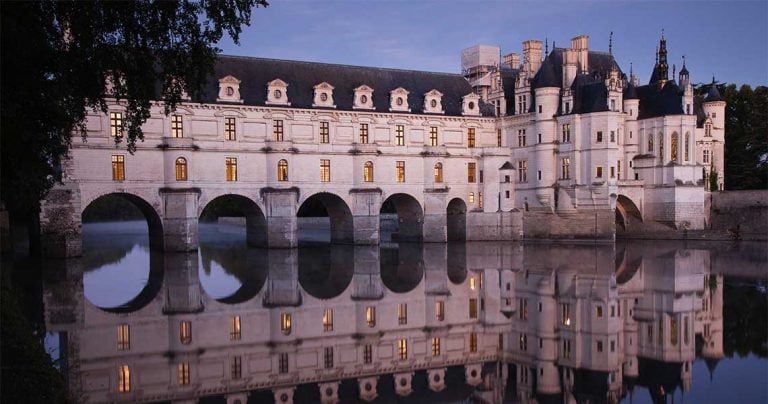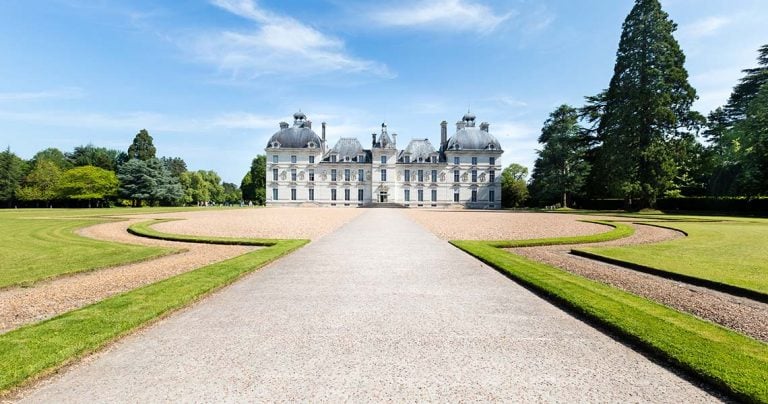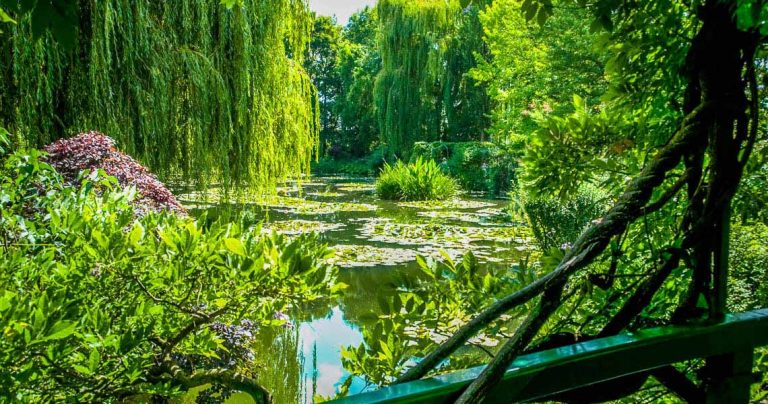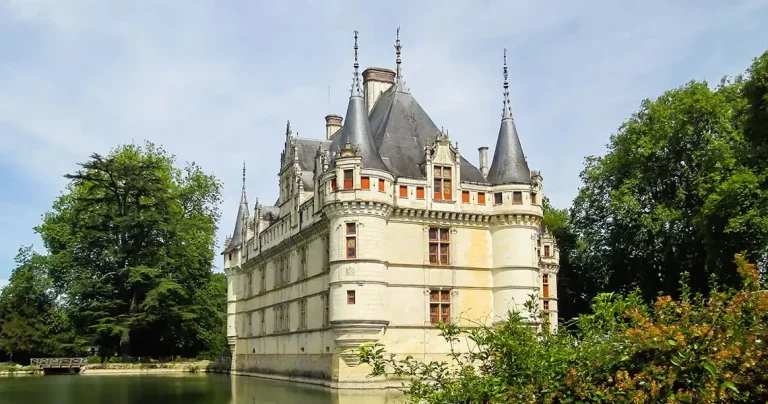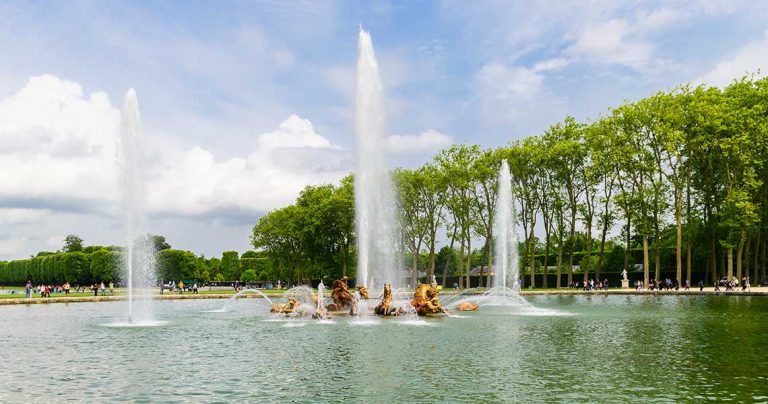Château de Chantilly
Over the years, the Château de Chantilly has spawned several well-known cultural icons, such as Chantilly Crème, Chantilly Lace, and Chantilly Porcelain. Of these three, only the ubiquitous cream continues to be produced today.
However, what has survived is one of the finest collections of historical art in France and a library of rare and precious books and manuscripts.
The Château de Chantilly stands just outside the village of Chantilly in the Picardy region of northern France. Surrounded by the Chantilly Forest, the town is only 25 minutes by train from Paris.
Brief History
The Middle Ages saw the origins of Chantilly take shape in the form of a fort to control the road from Paris to Senlis. The Hundred Years War (1337-1453) between England and France caused extensive damage to this structure, and it was not until 1386 that the Orgement family acquired the estate and built a new fortified château.
The domain of Chantilly was passed on by inheritance from 1386 to 1897 within the same family (Orgemont 14th-15th centuries, Montmorency 15th-17th centuries, Bourbon Condé 17th-18th centuries and Aumale 19th century), without ever being sold.
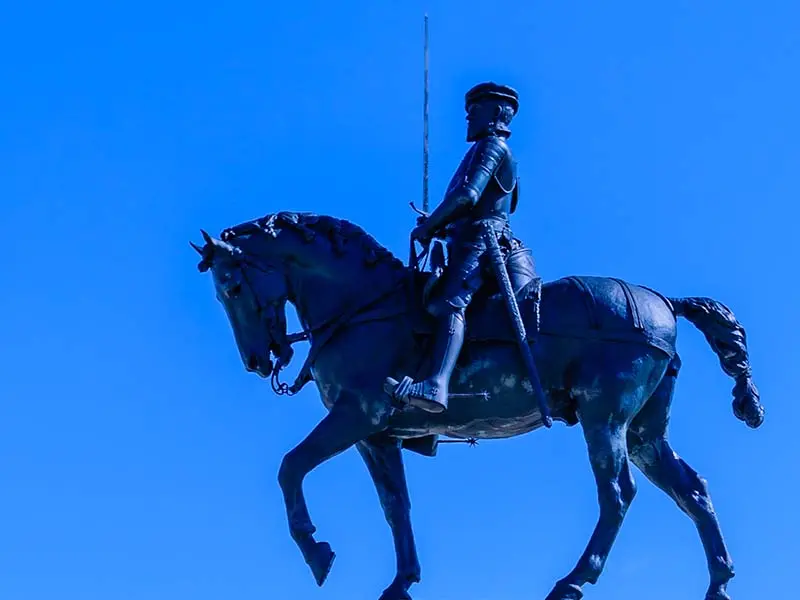
Louis-Henri-Joseph de Bourbon, the last prince of Condé, without heir since the execution of his son, the Duke d’Enghien in 1804 by Napoleon, bequeathed his property in 1830 to Henri d’Orléans (1822-1897), also known as the Duke d’Aumale, fifth son of King Louis-Philippe, together with 66 million lives, approximately 500 million dollars today.
When he was 15 years old, the Duke d’Aumale joined the French army with the rank of infantry captain. He distinguished himself during the French invasion of Algeria and eventually was appointed Governor-General of Algeria.
After marrying his cousin, Marie-Caroline de Bourbon-Siciles, the Duke d’Aumale commissioned Eugène Lami to decorate the Private Suites in the Petit Château, which had survived the revolutionary destructions.
In 1848, at the fall of his father’s regime, the July Monarchy, the Duke went into exile with his family in England. Their exile lasted more than twenty years.
He and all members of families that had reigned in France were subject to persecution, first deprived of any military and political position and then, in 1886, expelled from French territory.
When that law was promulgated, the Duke retired to Zucco in Sicily, Italy. There he bought a wine state and made one of the most famous wines ever produced in that country.
At the same time, he also dedicated time to renewing the Château de Chantilly. In rebuilding, he designed the Château to house the artwork, lavish furnishings, and rare books and manuscripts he was fond of acquiring.
The Duke d’Aumale was known for having one of the most significant art collections in the world, considered second only to the Louvre, including works by Raphaël, Poussin, Ingres, Watteau, Delacroix, and others.
With no heir, the Duke d’Aumale bequeathed Chantilly to the Institut de France in 1884, conditioned that it was open to the public. This generosity led to the government withdrawing his decree of exile, and the Duke returned to France in 1889. In keeping with the Duke’s wishes, the layout of the paintings has remained unchanged since the 19th century.
Art Collection and Library
The Château de Chantilly, also known as the Condé Museum, houses an impressive collection of French and Italian paintings (second only to the Louvre), including works by Raphael, Clouet, Poussin, Watteau, Ingres, Gericault, Delacroix, and Borot.
You can get a taste of the Château’s art collection at the Google Cultural Institute, and their YouTube channel is also an excellent resource.

The art collection consists of 15,000 pieces, including 830 paintings, 5,000 drawings and engravings, 250 sculptures and 1,000 old photographs.
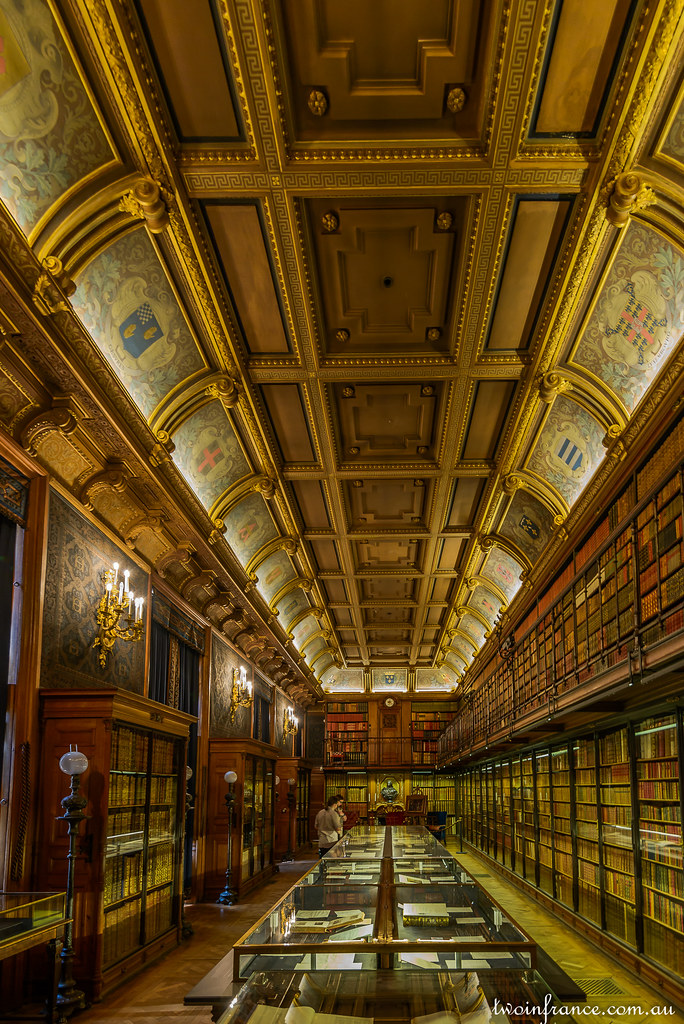
The library and archives contain 150,000 items, including 2,000 manuscripts, 10,500 rare and precious printed books, 3,000 portfolios or registers of old archives, historical correspondence, old charts, and maps.
The Apartments
The apartments, for their part, are located on the 1st floor and served as reception and accommodation places for the princes of Bourbon-Condé.
These spaces, essentially looted during the Revolution, were redeveloped in the 19th century by the Duke d’Aumale, who collected, acquired or inherited precious objects of art and furniture from the royal family or royal castles to restore the grandeur and splendour of the days of the princes of Condé.

The Gardens
Few gardens make such spectacular use of tranquil water as Chantilly. The Château was built on a rock in a marshy forest, with the lake serving as a moat. The original Renaissance garden was transformed into the present baroque garden by André Le Nôtre in 1663.
Remember all the Gardens you have seen in France, Versailles, Fontainebleu, Vaux-le-Vicomte and the Tuileries, and above all Chantilly.
André Le Nôtre
With these words, written two years before his death in 1698, le Nôtre showed his special attachment to the gardens of Chantilly.

The flower beds of 17th-century paintings are missing from Le Nôtre’s Garden of today, but the familiar lines of symmetrical parterres are still evident.
The Anglo-Chinese Garden was designed in 1773 by the architect Jean-François Leroy for Prince Louis-Joseph de Bourbon-Condé. This garden houses the Hamlet, a model for Marie-Antoinette and her little Trianon at Versailles.
The English Garden, located between the Château and the Great Stables, was designed by the architect Victor Dubois during the Restoration in 1817 to emulate the romanticism of English gardens.
Horses and Dogs
Hunting with packs of dogs was a favourite activity of the French royalty. With 240 horses and 400 hounds to house, Louis-Henri de Bourbon, the seventh Prince of Condé, built the Grandes Écuries (Great Stables).
Two groups of dog sculptures flank the entrance to the Château. The Duke of Aumale commissioned these sculptures to Auguste Cain, one of the best animal sculptors of the nineteenth century. These dogs carry on their flank the mark of the Condé pack, and the name of each dog is written on the base.

A masterpiece of 18th-century architecture, the Great Stables were designed by Jean Aubert between 1719 and 1740.

The connection with horses continues today, with the Great Stables housing the Museum of the Horse. Inaugurated in 2013, this museum presents the relationship between men and horses since the beginning of civilisation. The museum also retraces the horse’s role in power, war, hunting and leisure.
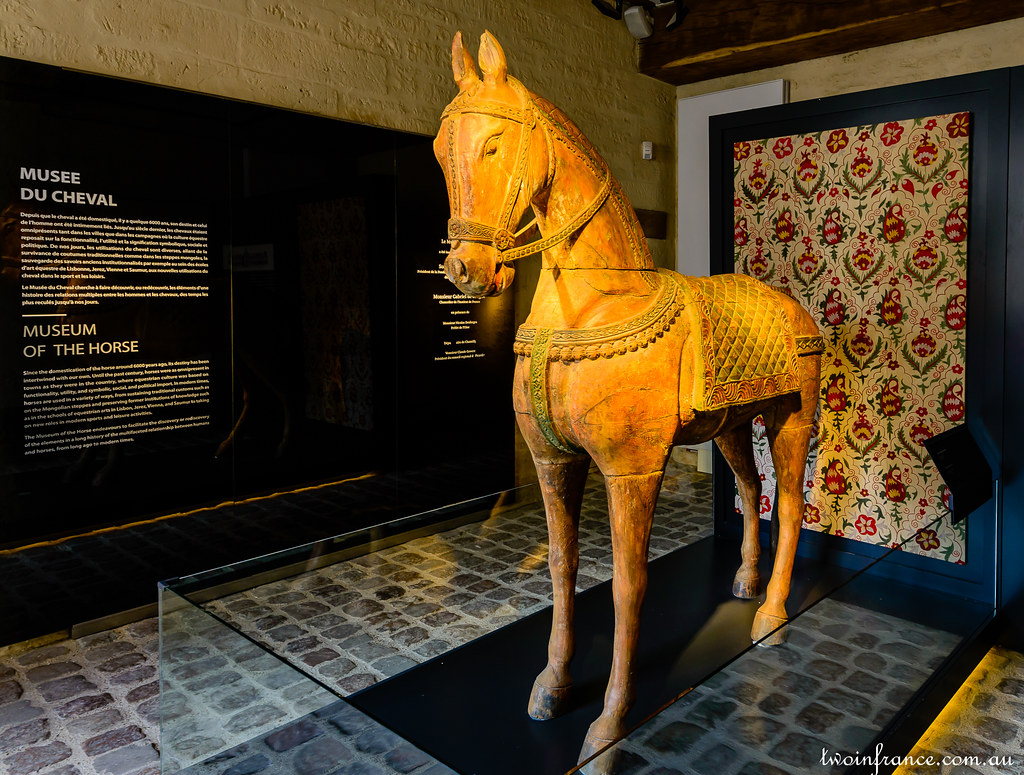
Horseracing, for which Chantilly has been famous since 1834, is represented in two museum rooms, with a video demonstrating how jockeys’ positions have evolved.
In addition, the Great Stables offers equestrian shows throughout the year. We were fortunate to attend Kavallisté, a one-hour show that combines Corsican culture, equestrian arts and polyphonic singing beneath the majestic dome of the Great Stables.

Getting there from Paris
Do your homework first. The Château does not open until 10.30 am (closed Tuesdays in Low Season). We visited in June, arriving before the gates opened, and at that time, few tourists were evident.
Take the special train to Picardie from the Gare du Nord, located upstairs in the main hall for the Grands Lignes. Chantilly-Gouvieux is the second stop and takes 25 minutes. The RER is an alternative, but it takes 45 minutes.
While there is supposed to be a shuttle bus at the station, we could not find it. Possibly we were too early. Our advice is to get a bus timetable and a map. We eventually caught a taxi (five minutes).
We could not find the bus stop for our return journey, so we humped it back to the station, which was around 45 minutes (not recommended for sciatica sufferers). No taxis were anywhere in sight.
Chantilly has much to see and do, but it takes planning to see it all. Few tourists were evident on our visit, but our advice is to get there early. If you are an art, garden and horse lover, you will need more than one day, but hey, it is only 25 minutes from Paris.
Book a combined ticket online to access the whole domain (Château, grounds, great stables, museum of the horse) + equestrian show. The equestrian show started at 2.30 pm and was fully booked. It seems that some tourist groups come just for the equestrian show.
Practical Information
60500 Chantilly, France
+33 3 44 27 31 80
[email protected]
Open from 10.30 am to 5 pm (6 pm for the grounds) Closed Tuesday
From Paris: SNCF Gare du Nord (25min) to Chantilly-Gouvieux then Bus 15 or Bus DUC to “Chantilly, église Notre-Dame”
From Paris: RER D (45min) to Chantilly-Gouvieux then Bus 15 or Bus DUC to “Chantilly, église Notre-Dame”
From Paris: A3 and/or A1 motorway, “Chantilly” exit, or D316 and D317 roads
www.domainedechantilly.com
YouYube Channel


